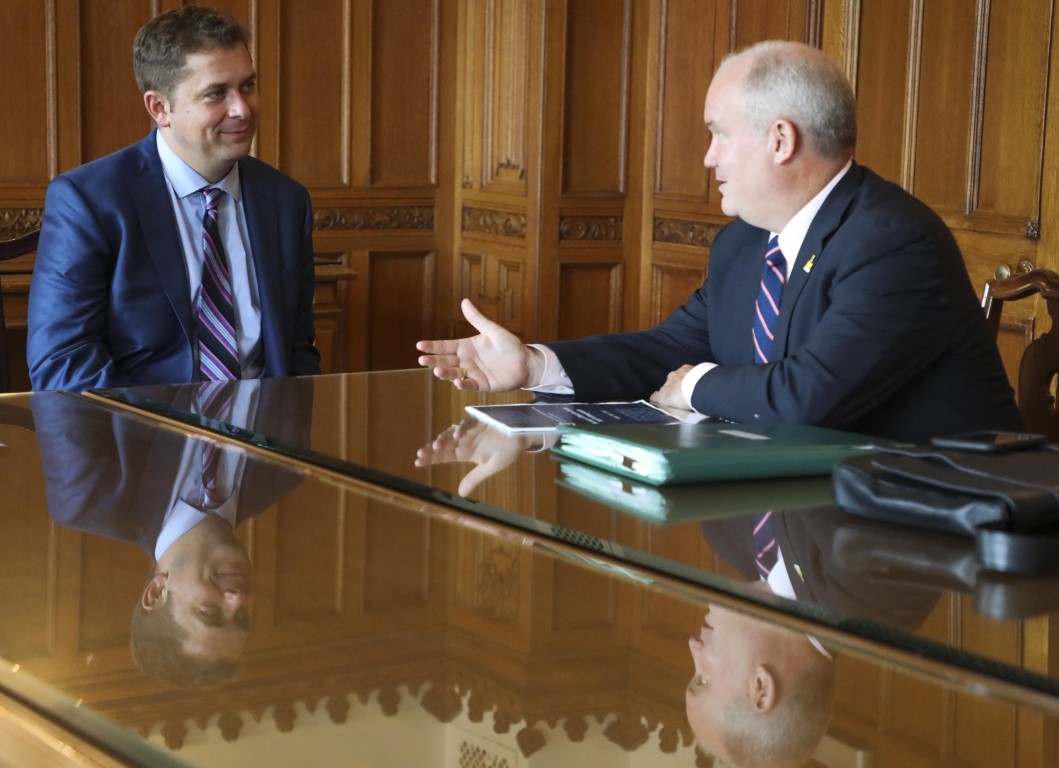
How big is his ‘big tent’ gonna be?
By Matthew Fraser, Opinions Editor
In late August, the Conservative Party of Canada elected a new leader in Erin O’Toole. Narrowly beating out Peter Mackay, O’Toole seeks to revarnish the image of the Conservative Party and usurp the incumbent Liberal Justin Trudeau. However, for O’Toole to be successful in reselling the Conservative Party to the Canadian public, we must first believe what he believes; we the public must buy whatever it is that he is selling.
The question then becomes, what is he selling, and do we really want it? What are his policies, and are they persuasive? Erin O’Toole has continued the well honoured political tradition of lobbing bombs at the opposition in every interview, but that doesn’t matter as much as what he proposes to do as PM. Amongst the policies he’s put out so far, three things are worth immediate inspection: his “Canada first” proposal, his stance on gun control, and his “big tent” approach to social conservatism and minority groups.
It might just be me, but any politician who starts off with a blatant knockoff of Donald Trump’s signature policy will not fare well in my books. Maybe there is a level of lust amongst Canadian conservatives to capture some of America’s lightning and bring it over the border, but I suspect that for many Canadians the name alone is a non-starter. When we move to the substance of the plan, Erin O’Toole admitted in an interview with CBC that it would not be hugely different from that which Trump delivered to our southern compatriots. Personally, when I see in that 40 percent of African-American small businesses are predicted to be permanently destroyed by COVID-19, and when I see that the largest number of American youths ever recorded are living with their parents (out of financial necessity) because of COVID, I am not sure I want that brought to my country (granted that Canada lost more than 20,000 businesses during the peak already).
O’Toole does, however, correctly identify a problem and offer intelligent solutions in his gun policy. The page on his website dedicated to his plan is titled “Tackling Violent Crime Instead of Demonizing Legal Gun Owners,” which for the Canadians whose understanding of gun-related crime and deaths is a little more complex, comes as a God send. One of his first propositions is to oppose regulations that don’t advance public safety, but instead crack down on legal and law-abiding gun owners. This is true and important to understand: banning the guns that good citizens own has absolutely no effect on the people who illegally purchase and traffic firearms. Banning me from owning an AR-15 has absolutely no effect on the criminals smuggling guns or on a gangster who would commit a shooting here in Vancouver. In fact, O’Toole shines light on this circumstance by proposing to “Focus the resources of the federal government on criminals engaged in the trafficking and use of illegal firearms instead of imposing more layers of bureaucracy on law-abiding Canadians.” Unfortunately, this plan will not be popular with the majority of Canadian citizens, even though it takes our already misused tax dollars and puts them to a much better (and more effective) use.
Lastly is the “big tent” approach to his party. When asked about social conservative Derek Sloan, O’Toole
commented that he wanted to make sure that “More Canadians see themselves reflected in our party as we approach an election.” Sounds like progress, doesn’t it? Yet, in early June a video was leaked where O’Toole expressed concerns regarding a ban on conversion therapy. Though his team did release the statement that worries centred on “how the bill has been drafted,” and added that “coercive, degrading actions that seek to change a person’s sexual orientation or gender identity should be banned,” O’Toole still must erect a tent big enough to shelter members of the LGBTQ+ community and the social conservatives he put down to become the Conservative Party leader.
Beyond just creating a party where supporters and opponents of gay marriage and gay people are equally welcomed and cherished, O’Toole must balance a public that has mostly ended the debate on abortion with his “conscience rights.” “Conscience rights” allow medical professionals to deny services due to their religious beliefs. For some people, the idea of allowing a doctor to refuse abortions because of God is unacceptable in this country and in this age; a great many Canadians find even gesturing in that direction preposterous—though a large number of non-religious Canadians think abortion and euthanasia breaches the Hippocratic Oath. For Erin O’Toole to shuffle in that direction while saying progressive sweet nothings could prove untenable as the pressure mounts.
So, what can we make of Erin O’Toole? At best he is working to bring the image of the Conservative Party close to what many Canadians find acceptable, without changing the beating heart of the group. Maybe he knows there are fewer stalwart social conservatives left around. Maybe he wants to be the door to a new age of the Conservative Party where old ideas are talked about but largely unpracticed. Should that work, O’Toole may just manage to shake enough people from the grip of Trudeau. Otherwise, the Conservative Party will continue to flounder mightily.

